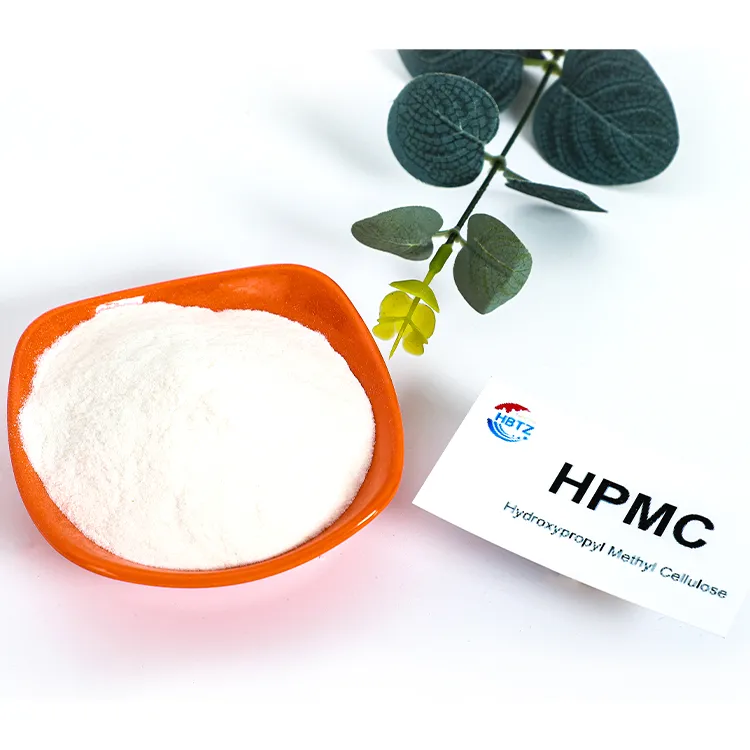
Hydroxypropyl Methyl Cellulose-Hebei Tangzhi Technology|Thickener,Stabilizer
Hydroxypropyl Methyl Cellulose (HPMC) is a high-performance multifunctional thickener and stabilizer, widely used in construction, medicine, food, and daily chemicals. With its unique properties, HPMC has become an essential component in various industries, offering enhanced performance and versatility. This article delves into the functions, advantages, technical specifications, applications, and company background of HPMC, providing a detailed overview of its significance in modern manufacturing.
Product Overview
HPMC, with the CAS number 9004-65-3, is a non-ionic cellulose ether derived from natural polymers like refined cotton. It is available in two types: hot-dissolving and instant-dissolving, each tailored for specific applications. The hot-dissolving type is commonly used in dry powders, internal and external wall putty, and mortar, while the instant-dissolving type is ideal for construction glues, coatings, and liquid products.


Key Features and Advantages
HPMC's versatility stems from its excellent thickening, water retention, and bonding properties. These characteristics make it indispensable in various applications:
- Good Thickening Effect: HPMC enhances the viscosity of surfactants, ensuring stable formulations.
- Superior Water Retention: It prevents paste from drying too quickly, reducing cracking after application.
- Enhanced Bonding: HPMC improves adhesion in products, providing strong cohesion and durability.
Technical Specifications
| Item | Range |
|---|---|
| Hydroxypropyl content | 7-12% |
| Methoxy content | 22-28% |
| Ash | ≤5% |
| Viscosity | 20,000-200,000 mPa·s |
| pH | 5-8 |
| Moisture | 5±2% |
| Gel temperature | 60-75℃ |
| Density | 350-450 g/cm³ |
Applications Across Industries
HPMC's adaptability allows it to thrive in diverse sectors:
1. Gypsum Applications
HPMC enhances the spreadability of plaster, improves anti-vertical flow ability, and prolongs the working time of mortar. It also boosts mechanical strength during solidification.
2. Adhesive Use
It ensures easy mixing of dry ingredients, reduces lumps, and improves construction efficiency. HPMC's water retention properties enhance adhesion and skid resistance.
3. Mortar and Cement Mortar
HPMC provides viscosity, prevents sedimentation, and improves fluidity and pumpability. Its water retention reduces cracking and enhances mechanical strength.
4. Wall Putty and Exterior Wall Insulation
HPMC's water retention extends construction time, improves work efficiency, and reduces shrinkage and cracking. It also enhances adhesion and surface quality for exterior coatings.
Production Process
The manufacturing of HPMC involves several critical steps:
- Raw Material Preparation: High-quality methyl cellulose, propylene oxide, and catalysts are selected and mixed according to precise formulas.
- Reaction Process: The mixture is reacted under controlled temperature and pressure to form hydroxypropyl methyl cellulose.
- Refining: Impurities and unreacted materials are removed through centrifugation and washing.
- Packaging and Storage: The refined product is dried, powdered, and packaged in multi-layer paper bags with a net weight of 25 kg.
About Hebei Tangzhi Technology Co., Ltd.
Based in Jinzhou City, Hebei Province, Hebei Tangzhi Technology Co., Ltd. is a leading manufacturer of HPMC and related products. With a 140,000 square meter factory and 90,000 square meters of dedicated space, the company utilizes advanced machinery to produce over 40,000 tons annually. Its strategic location near Beijing, Tianjin, and Qingdao ensures efficient logistics and global reach.
As a reliable HPMC supplier, Hebei Tangzhi offers competitive HPMC prices without compromising on quality. The company's commitment to innovation and sustainability makes it a trusted partner for industries worldwide.
Frequently Asked Questions (FAQ)
What are the types of HPMC?
HPMC is categorized into HPMC-M (hot-melt), HPMC-S (instant-dissolving), HPMC-E (for medicine and adhesives), and HPMC-Y (for construction).
How is HPMC manufactured?
The process includes cellulose extraction, etherification with propylene oxide and methyl chloride, purification, and drying to produce the final powder.
What are the differences between HPMC and MHEC?
HPMC contains hydroxypropyl and methyl groups, offering better water retention and thickening. MHEC, with methyl and hydroxyethyl groups, excels in dispersion and stability for aqueous systems.
Why Choose HPMC?
HPMC's multifunctional properties make it a preferred choice for industries requiring stability, durability, and efficiency. Whether in construction, pharmaceuticals, or food, HPMC ensures optimal performance and cost-effectiveness.
Conclusion
Hydroxypropyl Methyl Cellulose (HPMC) is a cornerstone in modern manufacturing, offering unparalleled versatility and performance. With its robust technical specifications, wide-ranging applications, and the expertise of manufacturers like Hebei Tangzhi Technology Co., Ltd., HPMC continues to drive innovation across industries. For HPMC suppliers, HPMC price, and HPMC for sale, visit Hebei Tangzhi's website to explore their comprehensive range of products.
References
NIST (National Institute of Standards and Technology) provides critical research and standards that underpin the development of materials like HPMC. While this article focuses on HPMC's industrial applications, the principles of measurement and material science outlined by NIST ensure the reliability and consistency of such products. For more information, visit https://www.nist.gov.
-
Cellulose Fiber Suppliers | Sustainable Natural Fibers for Industry and InnovationNewsNov.20,2025
-
Reliable Hydroxypropyl Methylcellulose Suppliers for Pharmaceutical & Industrial Use | TangzhiNewsNov.20,2025
-
Leading Cellulose Insulation Supplier for Sustainable Building MaterialsNewsNov.19,2025
-
Trusted Hydroxypropyl Cellulose Suppliers for Quality & SustainabilityNewsNov.18,2025
-
Top Cellulose Acetate Suppliers for Sustainable Industrial SolutionsNewsNov.18,2025
-
Reliable HPMC Suppliers for Sustainable Industrial Solutions | TangzhiNewsNov.18,2025





















